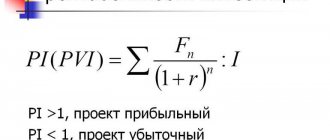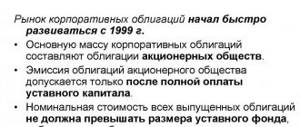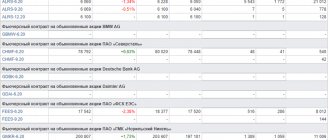What are “people's OFZs”, how to buy them and does it make sense?
On January 9 of this year, the Russian Ministry of Finance began implementing a new issue of special “people’s” federal loan bonds: OFZ-n No. 53005RMFS. The Russian Ministry of Finance guarantees the payment of coupon income every six months. Rates are fixed for three years in advance. At the end of December 2021, the ministry distributed a very convenient step-by-step instruction - “How to buy OFZ-n”.
Features of the new OFZ-n
The first issue of public OFZs made a splash on the market, but subsequent placement experience showed a decline in investor interest in this instrument. Therefore, in order to return OFZ-n to its former glory, the issue organizers took into account the shortcomings and proposed placements according to new rules:
- The number of agent banks has increased. If previously OFZ-n could only be purchased at Sberbank and VTB, now Promsvyazbank and Pochta-Bank have been added to them. It was also planned to connect Gazprombank, but apparently it didn’t work out.
- OFZ-n can now be purchased remotely , through electronic means of communication (mobile application and online banking). Previously, you had to come to the department in person to do this.
- Purchase commission has been waived. Previously, investors paid 1% of the purchase, which immediately reduced the coupon income by this amount. Now the Ministry of Finance bears all the costs of the purchase.
- The minimum purchase amount has been reduced. Previously, this was a threshold of 30 thousand rubles, now it is 10 thousand (i.e. approximately 10 OFZ-n).
Well, we can’t help but mention the new feature. Now you can get a loan from an agent bank using purchased bonds as collateral . For example, if you placed 2 million rubles in OFZ-n, and then urgently needed a mortgage, you can use OFZ-n as collateral.
Well, the already familiar features of OFZ-n have been preserved in the new 2021 issue:
- bonds can be inherited;
- OFZ-n are not traded on the secondary market; they can only be bought at a bank and sold only to a bank;
- prices for OFZ-n are set by the Ministry of Finance, not the market; you can track quotes for the 4th issue of OFZ-n here: https://www.minfin.ru/ru/perfomance/public_debt/internal/ofz-n/current/;
- coupon income from OFZ-n is not taxed.
In general, the placement of people's bonds is considered by the Ministry of Finance as an element of financial education; the new issue serves to attract the general public to the business of investing. Therefore, the issue volume is relatively low - only 15 billion rubles. At weekly OFZ auctions, the Ministry of Finance attracts much more funds.
And here’s another interesting article: Review of the new mutual fund SBGB from Sberbank: fund for the Moscow Exchange government bond index
Placing government bonds: why is the Ministry of Finance changing the rules?
Since the beginning of the year, the Ministry of Finance has already changed the procedure for holding OFZ auctions . The changes affected mainly the policy of determining placement limits.
First, in February, the department announced that for the first time it intended to refuse to announce placement volumes on the eve of auctions.
“In conditions of high volatility of demand, we want to have greater flexibility in satisfying applications and place more if there is high demand at fair prices,” the Ministry of Finance explained this decision. The new approach will allow for a more flexible response to changes in market conditions, the ministry said in a statement.
Thus, the Ministry of Finance was able to borrow more in good weeks. At the same time, by abandoning the limits, the department actually gained the opportunity to hedge against incomplete placements in unfavorable market conditions. In this case, reports of partial placements would cease to put pressure on the market and spoil the mood of investors. However, it is possible that the waiver of limits is a temporary measure, some analysts suggested.
Since February, the Ministry has indeed managed to hold several fantastically successful auctions using the new scheme, when weekly placement volumes broke all records.
However, at the end of May, after a series of successful placements, the representative of the Ministry of Finance, Konstantin Vyshkovsky, made a new policy statement, saying that against the background of the implementation of the borrowing program ahead of schedule, the Ministry of Finance of the Russian Federation plans to gradually reduce the volume of supply at OFZ auctions and may again return to determining the limits for the placement of securities.
“Given that we are implementing the borrowing program at an accelerated pace, it is obvious that we cannot allow ourselves to be unable to offer securities to the market in the second half of the year and the fourth quarter. If no negative events occur, then we will be forced to slightly reduce the volume of supply, since no one is going to increase the program,” Vyshkovsky said in an interview with Reuters.
As a result, the first June auction was indeed very successful, but again with limited supply limits for one of the offered securities. However, a few days after the auction, the head of the public debt department of the Russian Ministry of Finance, Konstantin Vyshkovsky, nevertheless clarified in an interview with TASS that the Ministry is now not going to re-establish limits at all auctions for the placement of OFZs without exception. Everything will depend on the specific paper and the goals of the department to locate on more favorable terms.
Profitability
An investor who buys OFZ-n receives income from two components:
- coupon payments;
- difference between purchase and redemption at par.
The denomination of OFZ-n is 1000 rubles. If an investor buys 100 securities at 998 rubles, he will earn upon redemption (1000 – 998) * 100 = 200 rubles of additional income. If the selling price of OFZ-n is higher than the face value, then, on the contrary, when the paper is redeemed, he will lose money. But the Ministry of Finance usually sells it much lower than the nominal value in order to stimulate demand.
However, keep in mind that when you purchase a bond, you will need to pay the accrued coupon —the interest that accrues on the bond from the time it was issued until the date of your purchase. Paying this expense allows the investor to receive the full coupon income for the first half of the year. Simply put, the NKD will be returned to you with the first coupon.
As a result, the price of the purchased OFZ-n consists of two components: the price announced by the Ministry of Finance + NKD. So, if the price of a bond is 1004 rubles, and the NKD is 18 rubles, then you will have to pay 1022 rubles for one bond.
Now about coupon income. The 2021 OFZ-n coupon is paid every six months. The bond circulates for 3 years, which means there will be 6 coupon payments in total. The rate of return is variable: the longer you hold the bond, the more you can earn. The range of bets is as follows:
- 1 coupon – 6.5% per annum;
- 2 coupon – 7%;
- 3 coupon – 7.05%;
- 4 coupon – 7.10%;
- 5 coupon – 7.25%;
- 6 coupon – 7.35%.
The average annual yield of OFZ-n, if you hold the bond for one year, is 6.17% , if for two years - 6.59%, and if for a full term (three years) - 6.80% .
Now, how much can you earn in rubles if you buy the minimum package of OFZ-n (10 pieces) right now:
- 1 coupon – 327 rubles;
- 2nd coupon – 349;
- 3 coupon – 351;
- 4 coupon – 354;
- 5 coupon – 361;
- 6 coupon – 366.
Total: 2036 rubles.
The Sberbank website has a convenient OFZ-n calculator that you can use for calculations. It immediately calculates the current bond price, cash flow, reserve for purchase and other parameters. You can calculate your potential income based on the number of securities purchased or invested funds.
Are there any risks?
It is rare, but it still happens that the borrower cannot fulfill its obligations - for example, the region delays payments on coupons. A technical default may be declared: when the borrower has the opportunity to pay funds to investors, but for some reason he is overdue. All information about defaults can be tracked on the websites of the Moscow or St. Petersburg Stock Exchange.
Remember about amortization, which is when you gradually get back some of the money you invested in bonds. In addition to the fact that you can get back part of the funds and, for example, invest them in new bonds, this instrument also speaks about the solvency of the region to which you lent. On the other hand, after part of the loan is repaid, coupons will be awarded for the remaining part, and not for the full amount of the loan. That is, if you bought 10 bonds for 1000 rubles each, with each depreciation, for example, 250 rubles, you will receive coupons only for the balance.
Where and how can I buy
You can purchase OFZ-n of the fourth issue No. 53004, as I already wrote, in one of 4 banks:
- Sberbank;
- VTB;
- Promsvyazbank;
- Pochta-Bank (not to be confused with Pochtobank - this is a different office).
To purchase, you need to either come to the branch with a passport, or use remote communication channels. However, it is not possible to buy OFZ-n in all branches. In Sberbank, for example, only in Sberbank Premier offices; in regular offices this is not possible.
And here is another interesting article: VTB overnight bonds - what are they and is it worth investing in them?
The minimum number of OFZ-n for purchase is 10 pieces, the maximum is 15,000.
There are no commissions charged upon purchase, but the bank will take a certain reserve amount in case the price of the paper changes at the time of the immediate purchase of OFZ-n. After the transaction is completed, the reserve will be returned to your account.
You can buy OFZ-n 4th issue from September 2, 2021 to February 25, 2021.
How to exit an investment
At any time, OFZ-n can be sold back to the bank. It is better for you to clarify the return procedure with the bank itself. Most likely, all you need to do is show up with your passport and fill out the appropriate application.
However, it is better to hold the bond until maturity, and here's why:
- when selling paper after owning it for less than a year, you will not receive coupon income;
- Over time, the coupon grows.
But if you suddenly need money urgently, you can return 100% of the invested funds at any time (but only on weekdays).
Is it worth taking OFZ-n of the fourth issue
If you are a beginning investor and don’t know where to place your money for the next couple of years without risks, I think that OFZ-n will suit you. Here are the reasons why:
- default on OFZ-n is practically zero (despite the fact that public bonds are not insured by the DIA like deposits, payments on them are guaranteed by the Ministry of Finance);
- you can invest more than 1.4 million rubles without risks;
- the yield on OFZ-n is higher than the deposit (when compared with the same Sberbank or VTB).
Another plus is that the coupon yield is constantly growing, which is very good in conditions of declining inflation and the reduction of the Central Bank’s key rate. While deposit rates and yields on new OFZ issues will decline, you will see increasing yields on OFZ-n for the next three years.
But not everything is so positive. I will note the disadvantages of this financial instrument:
- the profitability, although higher than the deposit, is not stellar: in general, you can assemble a diversified portfolio of OFZ, municipal and corporate bonds with a yield of 9-10% per annum with an acceptable risk;
- low liquidity - OFZ-n cannot be sold on the secondary market, you can only melt them into the same bank;
- dependence of prices on the Ministry of Finance - in fact, OFZ-n cost as much as the Ministry of Finance says, their price does not change depending on supply and demand;
- If you buy a bond at a higher price than its face value, you will incur a loss upon redemption, i.e. the real return on investment for you will be lower than the declared one.
How do you like the new issue of OFZ-n?
- That's right, we need to take 32%, 36 votes
36 votes 32%36 votes - 32% of all votes
- Good, but not for me 30%, 34 votes
34 votes 30%
34 votes - 30% of all votes
- Stupid, no need to take 22%, 25 votes
25 votes 22%
25 votes - 22% of all votes
- Well, first of all, I didn’t finish, but graduated. Secondly, the particle “that” is written with a hyphen. Thirdly, a capital letter is placed at the beginning of the sentence. Fourthly, this is a trivial typo. It was possible not to be sarcastic, but simply to point out it, as normal educated people do, and not natives with sub-par intelligence. Everyone makes mistakes, and you showed it brilliantly! How many classes have you completed?*9%, 10 votes
10 votes 9%
10 votes - 9% of all votes
- Well, analyst 2*100, Chuklin got 2000. How many classes did you complete?*7%, 8 votes
8 votes 7%
8 votes - 7% of all votes
- It makes sense, and you should take it if you’re lazy, like me. Thanks to the author, everything is on the shelves, and even fun! *1%, 1 vote
1 vote 1%
1 vote - 1% of all votes
Total votes: 114
11.09.2019
* - added by visitor
And here is another interesting article: What is sukuk, how is it issued and what is its profitability
Thus, OFZ-n is an instrument suitable for novice investors who want to invest a large amount without unnecessary risk and with a return that is faster than inflation. For them, people's bonds, I think, are one of the most suitable options. If you have at least a little understanding of the stock market and are generally mentally ready to invest, it is better to assemble a portfolio of OFZs and municipal bonds, or buy an ETF. You will earn more. But in any case, decide for yourself. Good luck and may the investments be with you!
Rate this article
[Total votes: Average rating: ]
What are Federal Loan Bonds in simple words
Federal loan bonds (OFZ) are debt securities, but the state acts as the issuer. This tool is used to attract loans on terms favorable to both parties.
The investor’s income is generated through coupons (there are other methods of remuneration, this will be discussed below), and the state receives a “ cheap loan”
».
The key advantage of government bonds is almost 100% reliability. Failure to fulfill obligations under OFZ is possible only in case of bankruptcy; such a scenario is unlikely.
From the point of view of reliability and profitability, federal loan bonds are a direct analogue of a bank deposit, but without a number of disadvantages. Unlike a deposit in a bank, bonds can be sold at any time without losing coupon income. Reliability is at a comparable level, the DIA does not insure investments in OFZ, but the issuer, represented by the Russian Federation, is considered highly reliable. In terms of yield, OFZs also outperform banks’ offers.
If you simplify the principle of operation of government bonds as much as possible and understand what federal loan bonds are and how they work in simple words, then the diagram looks like this:
- The Ministry of Finance of the Russian Federation can borrow money both abroad and within the country. Bonds are a tool that defines the relationship between the borrower and lenders. The Ministry of Finance of the Russian Federation itself determines the volume of issue and the yield of bonds.
- By purchasing OFZ, an investor actually lends money to the Ministry of Finance. Characteristics of bonds - open information; before purchase, the yield and the period when the Ministry of Finance of the Russian Federation will return the money by repaying the debt securities are known. The Ministry of Finance of the Russian Federation benefits from this scheme since it itself determines the conditions under which it receives a loan.
- The bond holder regularly receives coupon income, then the Ministry of Finance of the Russian Federation repays the debt securities, returning to the holder an amount equal to the face value for each OFZ.
All debt securities, including those issued by individual companies, work according to this scheme.










